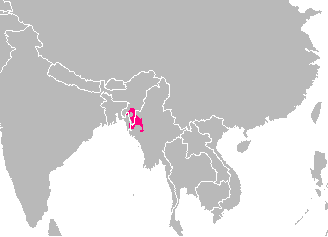|
Kanglei Mythology (other)
Kanglei mythology is the body of narrative myths, originally told by the people of Kangleipak or Manipur, India. It may refer to: * Meitei mythology, the mythology of the Meitei people, one of the ethnic groups of Kangleipak * Mythologies of any other indigenous communities of Kangleipak, such as Naga Naga or NAGA may refer to: Mythology * Nāga, a serpentine deity or race in Hindu, Buddhist and Jain traditions * Naga Kingdom, in the epic ''Mahabharata'' * Phaya Naga, mythical creatures believed to live in the Laotian stretch of the Mekong Riv ... mythology and Kuki mythology See also * Kangleipak (other) {{Disambig ... [...More Info...] [...Related Items...] OR: [Wikipedia] [Google] [Baidu] |
Kangleipak
Manipur () ( mni, Kangleipak) is a state in Northeast India, with the city of Imphal as its capital. It is bounded by the Indian states of Nagaland to the north, Mizoram to the south and Assam to the west. It also borders two regions of Myanmar, Sagaing Region to the east and Chin State to the south. The state covers an area of . Manipur has been at the crossroads of Asian economic and cultural exchange for more than 2,500 years. It connects the Indian subcontinent and Central Asia to Southeast Asia, East Asia, Siberia, regions in the Arctic, Micronesia and Polynesia enabling migration of people, cultures and religions. During the days of the British Indian Empire, the Kingdom of Manipur was one of the princely states. Between 1917 and 1939, some people of Manipur pressed the princely rulers for democracy. By the late 1930s, the princely state of Manipur negotiated with the British administration its preference to continue to be part of the Indian Empire, rather than part of ... [...More Info...] [...Related Items...] OR: [Wikipedia] [Google] [Baidu] |
Meitei Mythology
Meitei mythology or Manipuri mythology ( mni, Meitei Mi Lai Tingi Wari) is a collection of myths, belonging to the religious and cultural traditions of the Meitei people, the predominant ethnic group of Manipur. It is associated with traditional Meitei religion (Sanamahism). Meitei myths are a part of Meitei culture ( Manipuri culture) and explain various natural phenomena, how the human civilization developed, and the reasons of many things happening. Most of the Meitei legends are found in the Meitei language (Manipuri language) texts.Devi, Dr Yumlembam Gopi. Glimpses of Manipuri Culture. ISBN 978-0-359-72919-7. Textual sources Mythical narration plays an integral role in nearly every genre of Meitei literature , image = Numit Kappa.jpg , imagesize = , caption = The Numit Kappa, a Classical Meitei epic text written during the 1st century, based on ancient Meitei mythology and religion (Sanamahism) , alt ... ( Manip ... [...More Info...] [...Related Items...] OR: [Wikipedia] [Google] [Baidu] |
Naga People
Nagas are various ethnic groups native to northeastern India and northwestern Myanmar. The groups have similar cultures and traditions, and form the majority of population in the Indian states of Nagaland and Manipur and Naga Self-Administered Zone of Myanmar; with significant populations in Arunachal Pradesh and Assam in India; Sagaing Region and Kachin State in Myanmar (Burma). The Nagas are divided into various Naga ethnic groups whose numbers and population are unclear. They each speak distinct Naga languages often unintelligible to the others, but all are somehow in a way loosely connected to each other. Etymology The present day Naga people have been called by many names, like 'Noga' by Assamese, 'Hao' by Manipuri and 'Chin' by Burmese. However, over time 'Naga' became the commonly accepted nomenclature, and was also used by the British. According to the Burma Gazetteer, the term 'Naga' is of doubtful origin and is used to describe hill tribes that occupy the count ... [...More Info...] [...Related Items...] OR: [Wikipedia] [Google] [Baidu] |
Kuki People
The Kuki people are an ethnic group native to the Mizo Hills (formerly Lushai), a mountainous region in the southeastern part of Mizoram and Manipur in India. The Kuki constitute one of several hill tribes within India, Bangladesh, and Myanmar. In Northeast India, they are present in all states except Arunachal Pradesh. Some fifty tribes of Kuki peoples in India are recognised as scheduled tribes, based on the dialect spoken by that particular Kuki community as well as their region of origin. The Chin people of Myanmar and the Mizo people of Mizoram are kindred tribes of the Kukis. Collectively, they are termed the Zo people. History Early history The early history of the Kukis is obscure. The origin of the word "Kuki" is uncertain; it is an exonym: it was not originally as a self-designation by the tribes that are now called Kukis. According to the colonial British writer Adam Scott Reid, the earliest reference to the word Kuki can be dated to 1777 CE, when it first appear ... [...More Info...] [...Related Items...] OR: [Wikipedia] [Google] [Baidu] |


